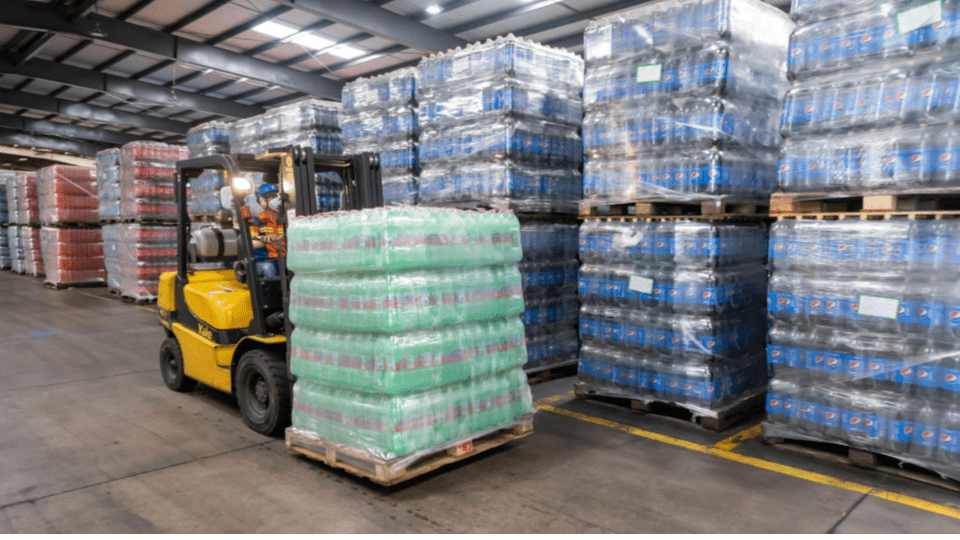A warehouse receiving process simulation study was conducted for bottleneck detection and resolution, applying the SCDA pallet receival simulator. The simulation study modelled various warehouses with different pallet receival processes and directly impacted warehouse process adjustments, contract management, and capacity-related investment decisions. Exemplary changes and improvements were e.g. the following: a) Adjusted truck arrival time windows, b) penalty fees for late arrivals, c) staging area surface area adjustments, d) receiving area forklift pool size, and e) fast- and slow-moving warehouse zones instead of chaotic warehousing strategy.
A total of 5 warehousing units were affected, with more than 300 forklifts in total. This simulation study was conducted based on the SCDA pallet receival process simulator. You can find the simulator via below link.
The library and example model provided by the SCDA pallet receival process simulator was used as a template for extensions and customizations, i.e. as a draft and template for the development of a very detailed and complex model with many different and highly specialized process “branches”.
Simulation results included more than 20 performance metrics
Below is an illustration of some exemplary simulation results, for one of the warehouses, simulating one of several defined “scenario days”. The graph shows the amount of available and occupied dock doors throughout that day, as well as the truck queue forming at the warehouse gate. This queue forms once all dock doors are occupied. Below graph also shows the amount of forklifts in use throughout the day.

The SCDA pallet receival process simulator outputs 4 relevant KPIs by default: The amount of occupied and free dock doors, and the amount of free and occupied forklifts. In addition to these default KPIs, more than 16 additional KPIs were added:
- amount of pallets buffered in the staging area
- average surface area utilization for staging areas at all dock doors
- min, max, median, and average wait time per truck at gate
- min, max, median, and average dwell time of pallet in receival staging area
- min, max, median, and average unloading time for trucks at dock door
- average forklift utilization
- average dock door utilization
- average storage slot utilization by storage area (fast mover zone, transit zone, slow mower zone)
- and more
Concluding remarks on warehouse receiving process simulation
I have developed various simulation templates and case study examples for training and study conduction purposes. They are available in the SCDA shop. Below are some examples and related articles.
- Link: Scheduling a CNC job shop machine park
- Link: Injection molding factory simulator reduces logistics costs
- Link: Yogurt SCM simulator app
- Link: Barge transport SimPy simulation
- Link: 53% ROI: Barge transport simulation study
- Link: Perishable SCM SimPy library
- Link: Simulation for yogurt supply chain optimization
- Link: Job shop SimPy Python simulation
I use Python and SimPy for a wide range of process-related simulation studies in logistics and manufacturing. There is no need for expensive commercial simulation software in this domain, even if simulation software vendors will try to make you believe the opposite. Simulation models developed in Python can be delivered in the form of flexible object-oriented libraries, and existing templates and default libraries, such as e.g. available in the SCDA shop, can relatively easily be customized and tailored to specific processes and operations. Whenever the process is important, SimPy is a great framework in Python for simulation model and library development. And its free. Compare that to a commercial, often inflexible discrete-event simulation software, for which you will often pay 25k+ USD in license fees (+ annual maintenance fees of several thousands USD). You will quickly come to appreciate this framework.

Data scientist focusing on simulation, optimization and modeling in R, SQL, VBA and Python





Leave a Reply